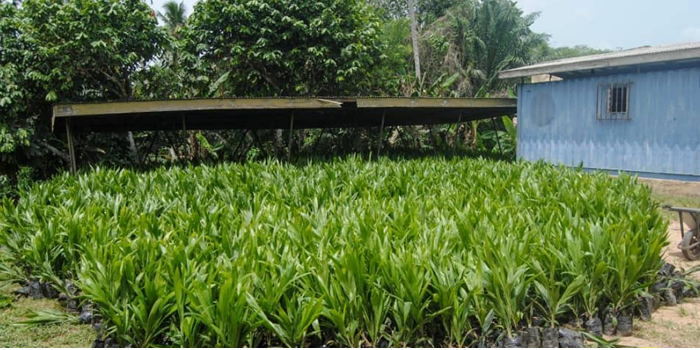

The types of industry and sex of employed population 15 years and older is shown in Table 13. More than half (58.5%) of the population are in agriculture, forestry and fishing. This means that over 5 out of every 10 persons are in this industry. Wholesale and retail has 12.8 percent, the manufacturing industry has 8.8 percent, whiles accommodation and food service activities have 6.1 percent. Education takes 3.3 percent of the employed population.
The proportion of males in the agriculture, forestry and fishing industry (62.9%) is more than that of the females (55.2%). On the other hand, the female proportion in wholesale and retail (18.0%) is far more than that of the males (5.9%). The manufacturing industry employs 8.0 percent of males and 9.4% of females. The industry which employs the least is the real estate industry and it has only 1 person, a male. Activities of extraterritorial organizations and bodies also employ only 2 people, who are both male.
Table 13: Employed population 15 years and older by industry and sex
Source: Ghana Statistical Service, 2010 Population and Housing Census.
Agro-processing
The Nkwantanum West Africa Fruit and Food Processing (WAFF) used to be the major outlet for many of the local farm produce, for large scale processing. However it is currently closed down. The value of this processing unit to the district is proven by the request of the majority of the beneficiary communities especially those in the Enyan-Maim and Denkyira zones to get it reactivated.
Currently though, most processing are on medium and very small scale. The edible oil processing at Owane and Essaman, Ochiso and Kromaim and Ochiso local soap (namely Amonkye) point, are the medium scale outlets whilst various individual operators constitute the small scale enterprises. Table 1.6.2 presents the various kinds of agro-processing units and their locations in the district.
Date Created : 9/12/2024 2:41:48 AM










 facebook
facebook
 twitter
twitter
 Youtube
Youtube
 +233 593 831 280
+233 593 831 280 0800 430 430
0800 430 430 GPS: GE-231-4383
GPS: GE-231-4383 info@ghanadistricts.com
info@ghanadistricts.com Box GP1044, Accra, Ghana
Box GP1044, Accra, Ghana